


Regenerative Grazing to Increase Soil Health and Profitability



Handbrake turn?

14/02/2020 1
Graeme Hand graemehand9@gmail.com 0418532130
1 2
Brazil


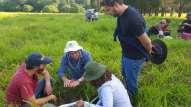
Underestimating Risk
•
“……..farm viability depends more on minimising losses than maximising production, and it is these accumulated losses which threaten farm business survival and growth".
Dr Tim Hutchings
14/02/2020 2
3 6
Management as decision making:
• Decision Levels:
• Simple (eg how to sow a crop)
• Complicated (eg how to develop a crop rotation)
• Complex (eg profitability, lifestyle and land improvement)
• The processes we use for each are different
Nigel McGuckian RMCG
Successful adoption of planned grazing

14/02/2020 3
EXPERTISE IN COMMUNITY-BASED SOCIAL MARKETING
7 8
Source: McKenzie-Mohr & Associates
www.cbsm.com
Holistic Context
• We want stable families living peaceful lives in prosperity and physical security, while free to pursue our own spiritual or religious beliefs. Adequate nutritious food and clean water. Enjoying good education and health in balanced lives with time for family, friends and community and leisure for cultural and other pursuits. All to be ensured, for many generations to come, on a foundation of regenerating soils and biologically diverse communities on Earth’s land and in her rivers, lakes and oceans.
Source Allan Savory https://www.savory.global/managing-complexity/
Holistic Context
We (people) desire:
• Secure well-paid jobs.
• Safe neighbourhoods.
• A good standard of living.
• Happy, successful kids.
• Security and happiness
14/02/2020 4
Simple generic holistic context
Why are we so divided on climate change? Dr. Rebecca Huntley - social researcher by Paul Barclay on Big Ideas, ABC RN https://www.abc.net.au/radionational/programs/bigideas/whyare-we-so-dvided-on-climate-change/11898456 9 10
Holistic Context
Supported by:
• Regenerating soils and biological diversity
• 100% ground cover
• Increasing litter depth rapidly decomposing
• Increasing diverse perennial plants with large basal area

Checklist
CheckingQuestions
1.CauseandEffect Doesthisactionaddresstheroot causeoftheproblem?
2.WeakLink
a. Social.Couldthisaction,duetoprevailingattitudesor beliefs,createaweaklinkbetweenusandthosewhose supportweneed?
b. Biological.Doesthisactionaddresstheweakestlinkin thelifecycleofthisorganism?
c. Financial.Doesthisactionstrengthentheweakestlinkin thechainofproduction?
3.MarginalReaction Whichactionprovidesthegreatest return,inlinewithourcontext,foreachadditionalunitof timeormoneyinvested?
4.GrossProfitAnalysis Whichenterprisescontributethe mosttocoveringtheoverheadsofthebusiness?
5.Energy/MoneySourceandUse Istheenergyormoney tobeusedinthisactionderivedfromthemostappropriate sourceintermsofourholisticcontext? Willthewayin whichtheenergyormoneyisusedbeinlinewithour holisticcontext?
6.Sustainability Ifwetakethisaction,willitleadtowardor awayfromthefutureresourcebasedescribedinour holisticcontext?
7.GutFeel Howdowefeelaboutthisactionnow?Willit leadtothequalityoflifewedesire?Willitadverselyaffect thelivesofothers?
14/02/2020 5
11 12
Four Key Insights
• Holism (production vs profit)
• Brittleness
• Role of predators
• Time
Brittleness
• Arbitrary Scale
• Depends on the distribution of atmospheric moisture
• 1 (non brittle) to 10 (brittle)
•
14/02/2020 6
HM Text Page31 Fig 4.1 13 14






14/02/2020 7
15 16
Non brittle Non brittle
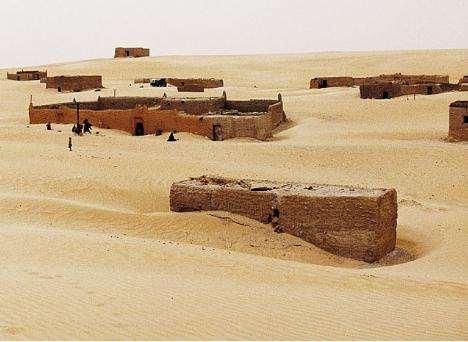

14/02/2020 8
Brittle
17 18
Brittle
Brittle

https://www.trailblazerstravel.com.au/wildebeest-migrationtanzania/
Role of predators

https://www.teacherspayteachers.com/Product/Reintroduction-of-Gray-Wolves-Into-Yellowstone-National-Park-164877
14/02/2020 9
19 20
Role of predators


Role of predators


14/02/2020 10
21 22
Jaime Elizondo
Time
•Recovery time and paddock time governs overgrazing (and over trampling)
•Not big tight mobs and high utilization

Time
• High stock density promotes germination of perennial grass seed bank


14/02/2020 11
Savory, Allan. Holistic Management, Third Edition: A Commonsense Revolution to Restore Our Environment (p. 363). Island Press. Kindle Edition. 23 24
•
One of a few severely grazed perennial grass plants among millions of plants after one horse had grazed for one hour in a paddock.

What is landscape function?
• Landscape function analysis (LFA) is a monitoring procedure that uses rapidly acquired field-assessed indicators to assess the biogeochemical functioning of landscapes…...
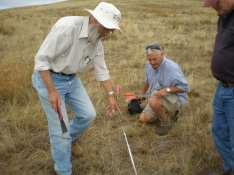

14/02/2020 12 Time High utilization ensures better grasses are not disadvantaged 25
Edition:
Restore Our Environment . Island Press. Kindle Edition.
Savory, Allan. Holistic Management, Third
A Commonsense Revolution to
LFA Manual © CSIRO Australia 2004 25 26
Landscape Function
Soil surface analysis
Simplified Indicator
1. Soil Cover
2. Basal Cover of perennial grass
3. Litter cover
4. Litter cover, origin and degree of decomposition
Soil surface indicators
5. Surface roughness STABILITY WATER INFILTRATION
NUTRIENT CYCLING
Landscape Function
Simplified
Soil surface analysis
Indicator
1. Soil Cover
2. Basal Cover of perennial grass
3. Litter cover
4. Litter cover, origin and degree of decomposition
Soil surface indicators
5. Surface roughness STABILITY
CYCLING
14/02/2020 13
David Tongway http://members.iinet.net.au/~lfa_procedures/
WATER INFILTRATION NUTRIENT
27 28
David Tongway http://members.iinet.net.au/~lfa_procedures/
Same soil type – different management


Leaf emergence

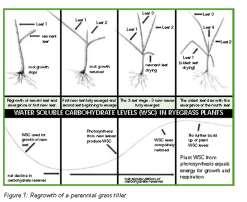
14/02/2020 14 Stability = 43.3 Infiltration = 24.0 Nutrient cycling = 11.5 Stability = 69.1 Infiltration = 39.8 Nutrient cycling = 31.7
Higher organic matter – more stable, increased infiltration and nutrient cycling Low organic matter – poor stability, low water infiltration and nutrient cycling
30 29 30
To be safe, we assume that the grazing has been severe, because some plants are always grazed severely, and thus we focus on plant growth rate.
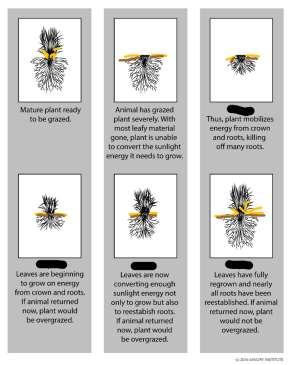
Definition of perennial grass recovery
• When it looks like an ungrazed plant & contains fresh yellow litter
• Depends on temperature and soil moisture & previous management which means we need to monitor


14/02/2020 15
Contains
Savory, Allan. Holistic Management, Third Edition: A Commonsense Revolution to Restore Our Environment (p. 334). Island Press. Kindle Edition.
fresh yellow litter
31 32

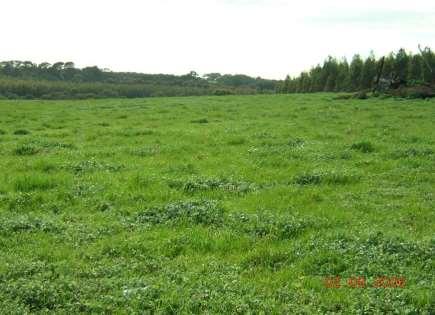
14/02/2020 16 33 34 33 34
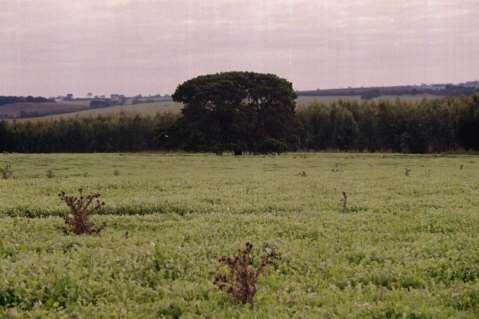

14/02/2020 17 35 36 35 36



14/02/2020 18 37
38 37 38
Inverary Hill Paddock

Weed Control
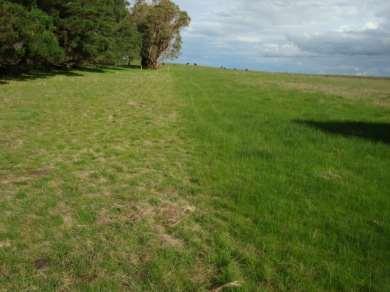
14/02/2020 19 39
39 40
Safe to fail practice areas
• Small
• Grazed for a couple of hours
• Locked up for range of recoveries
• At least one at 6 months and one at 12 months


Safe to fail practice areas
• Animals monitored closely
• Soil surface left covered
• Couple of practice areas with a range of recoveries
• Take photos and monitor


14/02/2020 20
41
42 41 42
14/02/2020 21
W W W W W W Temporary fence (strip grazing reel) Water point W W W W W W 43 44
Safe to fail strips
14/02/2020 22 W W W W W W W W W W W W 45 46
14/02/2020 23 W W W W W W W W W W W W 47 48

“Non selective or severe grazing has so many advantages over grazing selectively which demands coming back faster. On the left grazed selectively 2-3 times per year for over 12 years. On the right, after only one severe grazing followed by a full growing season rest. Same paddock, change of grazing type which leads to a much better succession and desirable plants recruitment. This type of grazing sequesters MUCH MORE carbon and benefits the WHOLE”. Source: Jaime Elizondo https://www.facebook.com/search/top/?q=jaime%20elizondo%20braun
14/02/2020 24 W W W W W W
49 50
Steps in Planned Grazing (#2)
1. Plan recovery and grazing time in each paddock
2. Schedule moves to make sure right paddock right time
3. Monitor to make sure plan is continually put back on track



14/02/2020 25
51
Pebbles/Pins Estimation some maths Mathematical 51 52
Calculating Grazing Time
Calculating Recovery Time: Key formulas
• Average paddock size = Total grazing area/number of paddocks
• Average grazing time = Recovery period/(number of paddocks – 1)
Example Cell
•11 paddocks
•180 days recovery
•110 ha
• Average Paddock size = 10 ha
• Average Grazing time = 180/11-1 = 18days
14/02/2020 26
53 54
Scheduling moves
•What is happening during this time
•Develop list
•Plan backwards from most critical activity
•Use Grazing &/or Paddock Plan
14/02/2020 27 Paddock No. Area (ha) Quality Grazing Days 1 10 Average 18 2 15 Average 27 3 5 Good 15 4 30 Poor 40 5 8 Average 15 6 2 Poor 3 7 6 Good 18 8 12 Poor 15 9 7 Average 15 10 2 Good 10 11 13 Average 21 Totals 110 197
55 56
Scheduling (#2)
Planned Grazing Monitoring
14/02/2020 28
57 Activity Jan Feb Mar Apr May Jun Jul Aug Sep Oct Nov Dec Joining Calving Marking Weaning Growth Sales Holidays Inverary Case Study Planning Sheet Date 18/2/2016 Adapted from Holistic Management® by Graeme Hand
57 58
•Early Warning Principle •Daily Monitoring •Annual monitoring

Not enough food. Or food moving too fast through the rumen.
Triangle should ideally be flat or bulging.
Animal Based Monitoring
Gut fill: We want the cows full of recovered perennial grass.
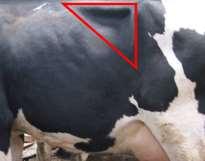
© Graeme Hand

Food moving too fast through the rumen. Health risk.
Good animal performance. Good animal health.
Pasture high in fibre, low in protein. Good animal health, lower animal performance.
Animal Based Monitoring
Dung Score: Is this perennial grass too young? (!)

© Graeme Hand
14/02/2020 29
59 60
Animal Based Monitoring


https://www.lifestyleblock.co.nz/lifestyle-file/livestock-a-pets/sheep/item/136-diarrhoea-in-sheep
Implementing Regenerative Grazing



14/02/2020 30
Time Difficulty Short Training Landscape Function Safe to fail strips Road trip to look at and talk to successful regen grazers (Cogs & PR) Design strips and water Build some strips and water
breeders that perform Continue development 61 62
Select
Key Habit
WeeklyPlannedGrazingCorrectiveActionForm Date: 01/06/2019
Estimating stocking rate during no growth periods
• Estimate how many days/ months of feed available with current mob
• Estimate how many days/ months of non growth likely
• Divide number of months feed available by months non growth
• Adjust stock numbers by lack of months of feed available / months non growth
14/02/2020 31
Item Variationto Plan (increasing/ okay/ decreasing) Causeof Variation Actiontoreturn toplan Who Recoverytimematching practiceareas Decreasing Overstocked Reducenumbers GH Perennialgrassrecovery Decreasing Recoverytoo short Reducenumbers decreasepaddocksize GH Litterdecomposition Decreasing Recoverytoo short Reducenumbers decreasepaddocksize GH GutfillScores Okay N/A NoAction N/A DungScores Okay N/A NoAction N/A ContentmentScores Okay N/A NoAction N/A DrinkingScores Okay N/A NoAction N/A AdaptedfromHolisticManagement®byGraemeHand
63 64
Estimating stocking rate during no growth periods - example
•Feed available current mob 4 months
•6 months estimated non growth
•Therefore need to reduce mob by
•2 months / 6 months = 1/3

.
Ground cover occasionally reached the district average but was generally poor. Paddocks set stocked. Low to no profit.
14/02/2020 32
Figure 1: Pre-Holistic Management years
High groundcover District average groundcover Low groundcover Date (years) Ground cover at Neringla The blue dots indicates the ground cover at Neringla, compared to other farms in the area Evidence –
65 66
FarmMap 4D
Evidence – FarmMap 4D
High groundcover
District average groundcover
Low groundcover
Ground

Evidence
High groundcover
District average groundcover
Low groundcover
FarmMap 4D
Ground cover at Neringla


Date (years)
Moderate stable profits
14/02/2020 33
Date (years)
Figure 2: Holistic-management Yo-yo years Peter & his father undertook HM training, guided by several trainers over this decade. Training resulted in erratic ground cover. While the farm spent more time with above average groundcover, the wild highs and lows stressed Peter.
cover at Neringla
Figure 3: Holistic-management Lightbulb moment Peter and Graeme working together and using ‘safe to fail’ practice areas to guide farm management and planning. Ground cover is consistently very high. Recovery time is adjusted through stocking rate to avoid running out of feed.
–
67 68
Evidence – FarmMap 4D
Ground cover at Neringla

Pre Holistic Management training
Standard Holistic Management practice
Practical HM practice – PR/GH
Evidence – FarmMap 4D
Ground cover at Neringla - 1st November 2018
High groundcover

Declining ground cover triggered rule of thumb.
• Rule of Thumb – when in doubt
o Decrease stocking rate increasing recovery
o Decrease paddock size to increase animal impact/ stock density to promote germination of the perennial grass seed bank.
14/02/2020 34
District
Low
average groundcover
groundcover Date (years)
69 70
Evidence – FarmMap 4D
Ground cover at Neringla - 30th January 2019

Large turnaround over a wet summer
Inverary Groundcover Compared to District

Inverary purchased and managed from a distance (July 2002)


14/02/2020 35
71 72
Inverary Groundcover Compared to District


Jar on left is water coming into property. Jar on right water leaving property. 15 months of planned grazing cleaned up runoff

Inverary Groundcover Compared to District



14/02/2020 36
– 2007 Drought Inverary growth pre summer 73 74
2006
Inverary Groundcover Compared to District

Clear run off after drought breaking 100 mm rainfall. No feeding required

2006 – 2007 Drought

Inverary Groundcover Compared to District

Comparison - Best practice farm and research
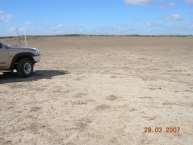
2006 – 2007 Drought

14/02/2020 37
75 76



Regenerative Grazing to Increase Soil Health and Profitability
Graeme Hand
graemehand9@gmail.com 0418532130



Perennial grass near Kojunup

14/02/2020 38
77 78
Perennial grass near Kojunup


14/02/2020 39
79 80

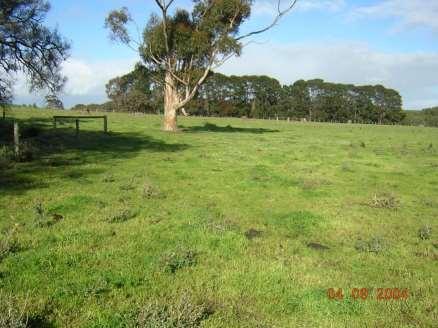
14/02/2020 40 81 82


14/02/2020 41 83 84


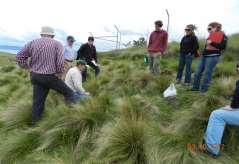
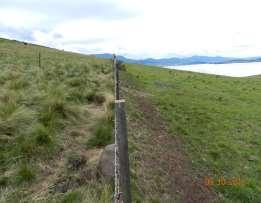

14/02/2020 42
Graeme Hand 0418532130
85 86
graeme.hand@bigpond.com
•Resowing isn’t always profitable
•Pasture resowing isn’t “best practice”
•Resowing locks in high inputs

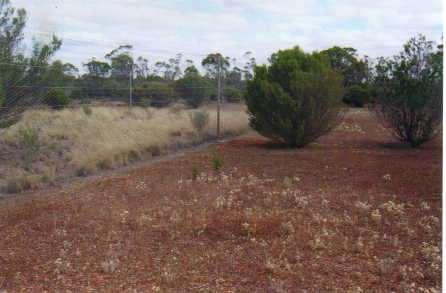

14/02/2020 43 Meat
Livestock Australia - Understanding Pasture Re-sowing Decisions for Meat Producers Final Draft report – Phase 2 March 2012
and
Graeme Hand 0418532130 graeme.hand@bigpond.com
87 88
Graeme Hand 0418532130 graeme.hand@bigpond.com








14/02/2020 44
Graeme Hand 0418532130 graeme.hand@bigpond.com
Andrew & Megan Mosley Cobar NSW
89 90
Mean Rainfall 389mm Image and rainfall BOM







Research - dominant view
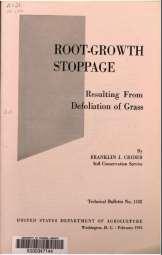

14/02/2020 45
Andrew & Megan Mosley Cobar NSW
Mean Rainfall 389mm Image and rainfall BOM
92 91 92

Grass Productivity
Andre Voisin
“To what height should grass be grazed?” Page 56
.......The logical idea is therefore not to graze the sward too closely so that the plant will be left with sufficient green surface, the chlorophyll of which will be able, right from the start, to carry out its work of synthesis and immediately aid regrowth. In this way the duration of the initial period of slow regrowth is reduced. From the plant physiology point of view one might say that the low, level part of the S curve is reduced.
Unfortunately we see here again perfectly sound, theoretical and scientific considerations running foul of practical obstacles which could not be foreseen a priori.
Cows (or animals in general) have the habit of first grazing down the parts they prefer before going on to the herbage they like less.”
14/02/2020 46 93
93 94
Selective Grazing
One of a few severely grazed perennial grass plants among millions of plants after one horse had grazed for one hour in a paddock.

Man, Cattle and Veld
Johann Ziestman
• Such information is as useless as........... the recommendation that grass should not be defoliated close to the ground as such grass takes longer to recover. The latter information may be of value one day when cattle have been taught to graze at an even height (Page 34).
14/02/2020 47
95
Savory, Allan. Holistic Management, Third Edition: A Commonsense Revolution to Restore Our Environment . Island Press. Kindle Edition.
95 96












































































































